STEM activities for preschoolers introduce young minds to science, technology, engineering, and math through playful, hands-on experiences. These activities foster curiosity, creativity, and critical thinking while using everyday materials, making learning fun and accessible for early childhood development.
What is STEM Education?
STEM education stands for Science, Technology, Engineering, and Math, focusing on interdisciplinary learning to solve real-world problems. It encourages curiosity, critical thinking, and creativity, fostering skills like problem-solving, collaboration, and innovation. In preschool, STEM is introduced through playful, hands-on activities that explore natural curiosity and lay the foundation for future academic success. It’s not just about subjects but a way of thinking—asking questions, experimenting, and understanding how things work. STEM education for preschoolers is designed to be engaging and accessible, using everyday materials to spark an early interest in these fields. By integrating STEM into daily routines, educators and parents can nurture a love for learning and prepare young minds for a rapidly changing world. STEM education is a powerful tool for building confidence and intellectual growth from an early age.
Why STEM for Preschoolers?
Introducing STEM to preschoolers is essential for fostering early curiosity, creativity, and problem-solving skills. These activities lay the groundwork for future academic success by building foundational knowledge in science, technology, engineering, and math. Preschoolers are naturally inquisitive, and STEM encourages them to explore and understand the world around them. It helps develop critical thinking, hand-eye coordination, and collaboration skills through hands-on, play-based learning. STEM activities are designed to be engaging and accessible, using everyday materials to spark interest and imagination. By starting early, children gain confidence in their abilities and develop a growth mindset, which is crucial for overcoming challenges in school and beyond. STEM for preschoolers is not just about academics—it’s about nurturing a lifelong love for learning and preparing young minds for a rapidly evolving world.
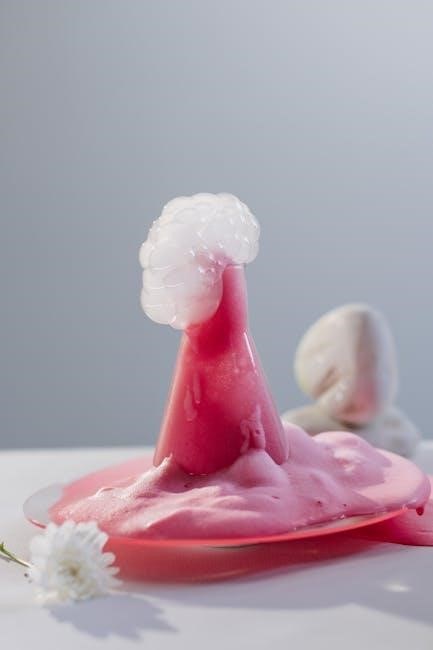
Benefits of Early STEM Exposure
Early STEM exposure offers numerous benefits for preschoolers, fostering foundational skills that last a lifetime. It encourages curiosity, creativity, and critical thinking, while building problem-solving abilities through hands-on activities. STEM helps children develop spatial awareness, hand-eye coordination, and analytical skills, all of which are essential for academic success. It also promotes collaboration and communication, as kids work together on projects and share their ideas. Early exposure to STEM concepts can reduce anxiety about science and math in later years, making these subjects feel more approachable. Additionally, STEM activities enhance creativity and resilience, teaching children to embrace challenges and learn from failures. By introducing STEM early, we equip young learners with the tools to navigate a technology-driven world confidently and prepare them for future opportunities in STEM fields.

Understanding STEM Concepts for Young Children
STEM concepts for preschoolers are introduced through simple, engaging activities that foster problem-solving, curiosity, and exploration. Hands-on play helps young children grasp foundational science, technology, engineering, and math skills naturally.
Science Activities for Preschoolers
Science activities for preschoolers are designed to spark curiosity and exploration of the natural world. Simple experiments, like mixing colors or growing plants, introduce basic scientific concepts. Hands-on activities encourage children to ask questions, observe changes, and draw conclusions. For example, using shaving cream to create “clouds” or exploring texture with playdough fosters creativity and scientific thinking. These activities are perfect for young learners, as they promote problem-solving skills and a love for discovery. By incorporating everyday materials, science becomes accessible and fun, laying the foundation for future STEM interests. Engaging in nature walks or sorting objects by texture and color also enhances scientific awareness in a playful manner.
Technology and Engineering Basics
Introducing technology and engineering basics to preschoolers involves playful, hands-on activities that encourage problem-solving and creativity. Simple tasks like building bridges with blocks or designing structures with everyday materials help develop foundational engineering skills. Technology can be explored through interactive games or basic tools, fostering an understanding of how things work. Activities like sorting objects or using puzzles introduce logical thinking, while role-playing with tools, such as toy hammers or wrenches, sparks curiosity about engineering roles. These experiences help preschoolers develop hand-eye coordination and critical thinking, laying the groundwork for future STEM exploration. By integrating technology and engineering into play, young children learn to approach challenges with creativity and confidence.
Math Foundations in Early Childhood
Math foundations in early childhood are built through playful, hands-on activities that introduce basic concepts like counting, sorting, and patterns. Preschoolers learn to recognize shapes, compare sizes, and understand numbers through everyday objects and games. Activities like counting toys, sorting buttons by color, or arranging blocks in patterns help develop problem-solving skills and logical thinking. Simple math vocabulary, such as “more,” “less,” and “equal,” is naturally incorporated during play. These early math experiences foster curiosity and prepare young children for more complex problem-solving in the future. By integrating math into daily routines and play, preschoolers develop a strong foundation that supports their STEM journey and lifelong learning.

Simple STEM Activities for Preschoolers
Simple STEM activities for preschoolers include building with blocks, exploring nature, counting games, and using everyday materials to encourage curiosity and hands-on learning in a fun way.
Building and Construction Play
Building and construction play is a fundamental STEM activity for preschoolers, fostering creativity and problem-solving skills. Using blocks, LEGO, or cardboard boxes, children design and build structures, experimenting with balance and stability. This play encourages spatial awareness, hand-eye coordination, and critical thinking. Adults can support by asking open-ended questions, such as, “How can you make your tower taller without it falling?” or “What happens if you add weight?” These interactions help children develop engineering concepts and perseverance. Simple materials like magnets or bridges further enhance learning, making construction play both educational and engaging. It’s an ideal way to introduce young minds to basic engineering principles through hands-on, imaginative experiences.
Exploring Nature and the Environment
Exploring nature and the environment is a captivating STEM activity for preschoolers, fostering a connection with the natural world. Activities like observing plants, collecting leaves, and studying insects introduce basic biology and environmental science concepts. Children can participate in simple outdoor experiments, such as measuring rainfall or tracking seasonal changes, to understand weather patterns and ecosystems. Sensory experiences, like touching tree bark or listening to birdsong, encourage curiosity and exploration. These activities also promote an appreciation for conservation and sustainability. By asking questions like, “What happens when we plant a seed?” or “Why do leaves change color?” adults can guide children in developing scientific inquiry skills. These hands-on experiences make STEM learning fun and meaningful, while building a foundation for environmental stewardship and scientific literacy.
Counting and Sorting Games
Counting and sorting games are essential STEM activities for preschoolers, laying the groundwork for mathematical understanding and problem-solving skills. These games introduce children to basic numeracy, patterns, and categorization. Activities like sorting objects by color, shape, or size encourage critical thinking and hand-eye coordination. For example, using everyday materials like buttons, blocks, or fruit, children can practice counting aloud and grouping items into sets. Simple challenges, such as “How many red toys can you find?” or “Can you sort these shapes into different baskets?” make learning engaging and interactive. These exercises also prepare preschoolers for more complex math concepts, like addition and subtraction, while fostering patience and attention to detail. By incorporating counting and sorting into play, children develop a strong foundation for STEM subjects in a fun and accessible way.
Using Everyday Materials for STEM
Using everyday materials for STEM activities makes learning accessible and engaging for preschoolers. Household items like cardboard boxes, plastic bottles, fabric scraps, and kitchen utensils can be transformed into tools for exploration. For instance, children can create marble runs with cardboard tubes or build bridges with popsicle sticks. These activities encourage creativity, problem-solving, and critical thinking. Simple experiments, such as mixing baking soda and vinegar to create a fizzy reaction, introduce basic scientific concepts. By repurposing common materials, educators and parents can provide hands-on STEM experiences without needing specialized supplies. This approach fosters curiosity and reinforces the idea that learning can happen anywhere, making STEM education inclusive and budget-friendly for young learners.
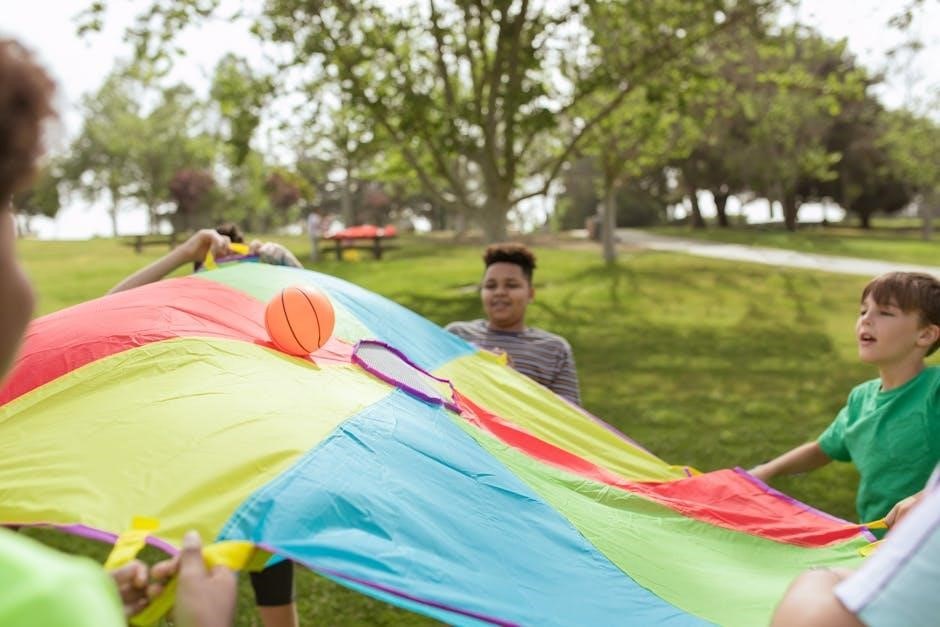
Engaging STEM Projects for Preschoolers
Engaging STEM projects for preschoolers include hands-on activities like building bridges with popsicle sticks, creating art with geometric shapes, and conducting simple science experiments. These projects spark curiosity, promote creativity, and build foundational skills in science, technology, engineering, and math through playful learning experiences.
Designing Structures with Blocks
Designing structures with blocks is a foundational STEM activity that encourages creativity, problem-solving, and critical thinking in preschoolers. By stacking, balancing, and arranging blocks, children develop spatial awareness and fine motor skills. This activity introduces basic engineering concepts, such as stability and symmetry, while fostering curiosity and innovation. Educators can guide children by asking open-ended questions, like “How can you make your tower taller without it falling?” or “What shape makes the strongest base?” These prompts help children experiment and learn through trial and error. Block play also enhances math skills, as children observe and replicate patterns, shapes, and proportions. Simple challenges, such as building a bridge or a specific structure, can be incorporated to deepen understanding and engagement.
Creating Art with STEM Principles
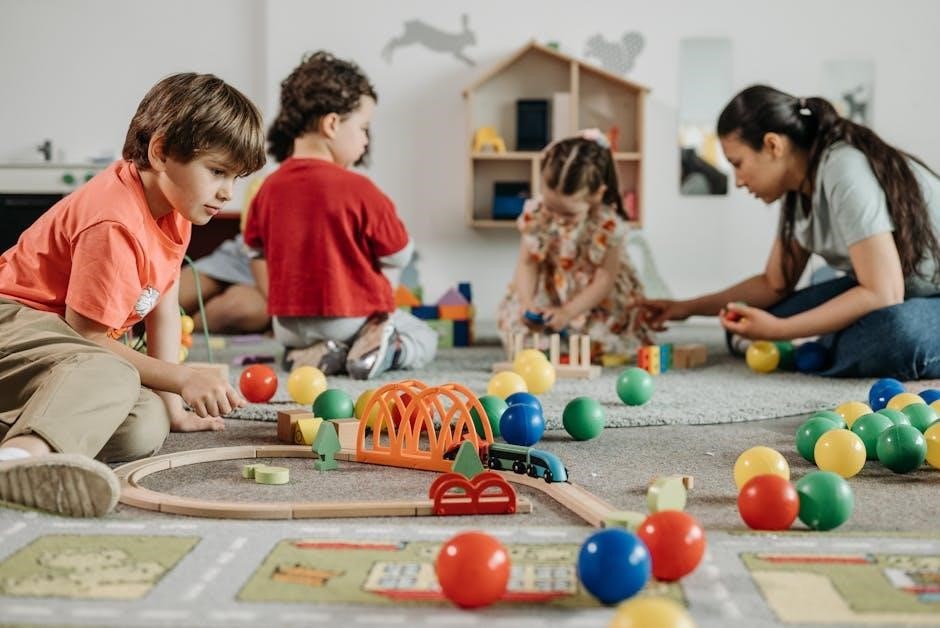
Creating art with STEM principles combines creativity with scientific concepts, offering preschoolers a unique way to explore and learn. Activities like symmetry painting or patterned designs introduce children to mathematical concepts such as geometry and sequencing. Using natural materials, like leaves or rocks, encourages observations of textures and shapes, fostering an understanding of the environment. STEM-based art also involves problem-solving, such as mixing colors to create specific hues or using everyday materials to craft 3D sculptures. These activities promote critical thinking while allowing children to express their creativity. By integrating STEM into art, educators help preschoolers develop a deeper appreciation for how science, technology, engineering, and math influence their world. This fusion of art and STEM lays a strong foundation for future academic and creative endeavors, making learning both fun and meaningful.
Water Play and Floating Experiments
Water play and floating experiments are engaging STEM activities that introduce preschoolers to basic scientific concepts like buoyancy and density. Using simple materials such as cups, water, and small toys, children can explore why certain objects float while others sink. These activities encourage curiosity and problem-solving skills as kids predict outcomes and test their hypotheses. Floating experiments also incorporate math by counting the number of objects that float or sink and measuring the water levels. This hands-on approach makes learning fun and interactive, helping preschoolers develop an early understanding of STEM principles while fostering creativity and critical thinking through play. These experiments are easy to set up and adapt, making them ideal for both classrooms and home environments.
Engineering Challenges for Young Minds
Engineering challenges are a fun and interactive way to introduce preschoolers to problem-solving and design thinking. Simple tasks, like building a bridge with blocks or creating a tower that holds toys, encourage creativity and critical thinking. These activities help develop fine motor skills and hand-eye coordination while fostering an understanding of basic engineering principles. Using everyday materials, such as cardboard, straws, and tape, children can experiment with different designs and learn from their successes and failures. Engineering challenges also promote collaboration and teamwork when done in groups, allowing preschoolers to share ideas and learn from one another. These hands-on experiences lay the foundation for future STEM exploration and inspire young minds to think innovatively. By making engineering accessible and enjoyable, these challenges spark curiosity and confidence in early learners.

Resources for STEM Activities
Discover free STEM activity sheets, guides, and PDF downloads. Explore online communities and recommended books for engaging preschool STEM ideas and tools.
Free STEM Activity Sheets and Guides
Free STEM activity sheets and guides provide engaging, hands-on learning experiences for preschoolers. These resources, often available as downloadable PDFs, include fun experiments, engineering challenges, and science-based games. Designed for teachers and parents, they offer step-by-step instructions and adaptable materials to suit various settings. Many guides focus on fostering critical thinking and problem-solving skills through play-based activities. The STEM Family Companion Guide is a popular resource, offering activities that align with daily routines and exploration. These tools make it easy to introduce STEM concepts in a way that feels natural and enjoyable for young learners, helping to spark their curiosity and creativity while building foundational skills for future success.
PDF Downloads for Preschool STEM
PDF downloads for preschool STEM activities offer a convenient and accessible way to engage young learners. Resources like the Building Blocks program provide comprehensive activity sheets and guides tailored for early childhood education. These downloadable materials are designed to be user-friendly, with hands-on experiments, engineering challenges, and science-based games. Many PDF guides, such as the STEM Family Companion Guide, include activities that align with daily routines, making STEM learning a natural part of play. These resources are perfect for teachers and parents seeking structured yet adaptable activities to foster critical thinking and creativity in preschoolers. By leveraging these PDF downloads, educators and caregivers can easily introduce foundational STEM concepts, supporting early childhood development and preparing young minds for future success.
Online Communities for STEM Ideas
Online communities provide a wealth of STEM ideas tailored for preschoolers, offering resources, inspiration, and support for educators and caregivers. Websites like acf.gov and aistearsiolta.ie share downloadable guides, activity sheets, and lesson plans designed for early childhood STEM education. These platforms often feature forums where teachers and parents can exchange ideas, ask questions, and collaborate on creative projects. Many online communities also offer free STEM activity kits, such as the Building Blocks program, which includes hands-on experiments and engineering challenges suitable for young children. These resources are regularly updated, ensuring access to fresh and engaging STEM content. By joining these online communities, educators can gain valuable insights and tools to integrate STEM into preschool curricula effectively.
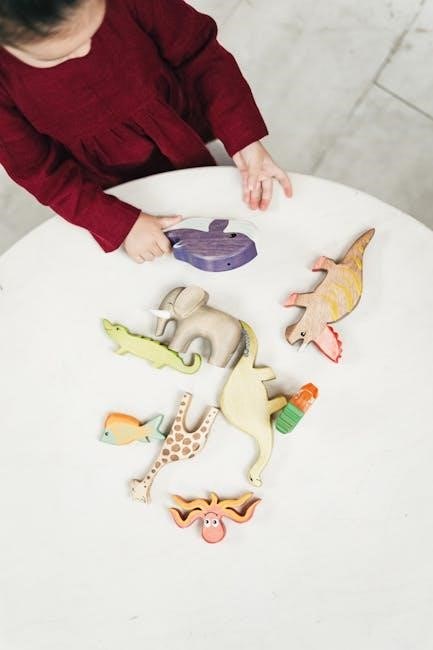
Recommended Books and Tools
Several books and tools are highly recommended to support preschool STEM activities. Books like “The Way Things Work” by David Macaulay and “Rosie Revere, Engineer” by Andrea Beaty inspire young minds with engaging stories about science and engineering. Tools such as building blocks, magnetic tiles, and art supplies encourage hands-on creativity and problem-solving. Digital tools like STEM-themed apps and educational websites also provide interactive learning experiences. Additionally, resources like “STEM Activity Sheets” and “Engineering Design Process Cards” offer structured guidance for teachers and parents. These tools help foster critical thinking and curiosity in preschoolers, making STEM concepts accessible and fun. They are designed to align with early childhood development goals, ensuring a strong foundation for future learning.
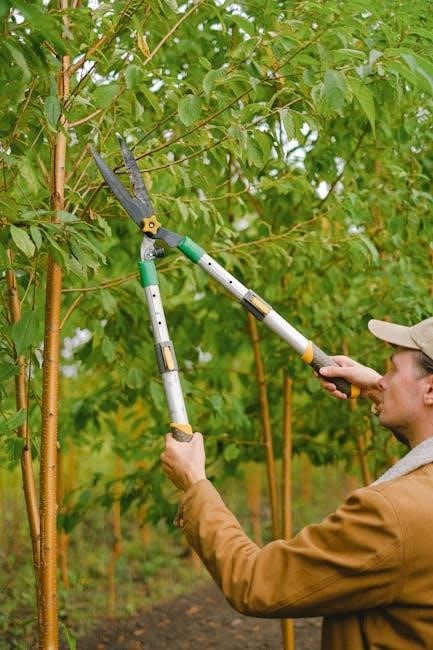
Implementing STEM in Daily Routines
Integrating STEM into daily routines fosters curiosity and learning through playful, hands-on experiences. Simple activities like counting during snack time or exploring shapes in toys make STEM accessible and fun.
Integrating STEM into Story Time
Story time offers a natural opportunity to weave STEM concepts into daily routines. By incorporating STEM language and questions during reading, educators can foster curiosity and critical thinking. For instance, counting objects on a page or identifying shapes in illustrations introduces math concepts. Asking open-ended questions like, “What do you think will happen next?” or “Why do you think the character built it that way?” encourages problem-solving skills. Discussing patterns, sequences, and cause-and-effect relationships in stories further reinforces STEM principles. Using STEM vocabulary during story time helps children build a foundation for future learning. This approach makes STEM accessible and engaging, showing how it is part of everyday life, not just a classroom activity.
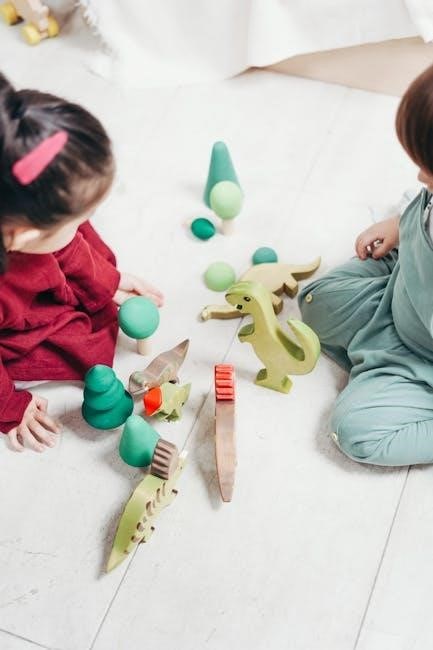
Using STEM Language in Conversations
Using STEM language in conversations with preschoolers helps them develop foundational skills and vocabulary. Simple phrases like “count the blocks” or “find a circle” introduce math and geometry concepts. Describing shapes, patterns, and sequences during play fosters curiosity and problem-solving abilities. Encouraging children to observe and describe their surroundings, such as “How many legs does a spider have?” or “What materials are these blocks made of?” sparks STEM thinking. Asking open-ended questions like “What do you think will happen if we mix these colors?” or “How can we make this tower stronger?” promotes critical thinking and creativity. By incorporating STEM vocabulary and inquiries into daily conversations, educators and parents can naturally nurture a child’s understanding of science, technology, engineering, and math, making these concepts part of their everyday language and exploration.
Encouraging Curiosity and Questions
Encouraging curiosity and questions is a cornerstone of STEM education for preschoolers. By fostering an environment where children feel comfortable asking “why” and “how,” educators and parents can nurture their natural inclination to explore and learn. Simple strategies like asking open-ended questions, such as “What do you think will happen if we mix these colors?” or “How can we make this tower stronger?” encourage critical thinking and creativity. Encouraging children to predict outcomes, discuss their observations, and reflect on their experiences helps build problem-solving skills and a growth mindset. Even if answers aren’t immediately clear, the process of questioning and seeking solutions is invaluable. This approach not only deepens their understanding of STEM concepts but also prepares them for lifelong learning and innovation. Curiosity is the spark that ignites a love for learning, and STEM activities provide the perfect platform to keep it glowing.
Adapting Activities for Different Settings
Adapting STEM activities for various settings ensures accessibility and engagement for all preschoolers. Whether in a classroom, home, or outdoor environment, simple modifications can make STEM learning flexible and effective. For example, building structures with blocks in a classroom can translate to using natural materials like sticks and rocks outdoors. At home, everyday items like cardboard boxes and household materials can be repurposed for engineering challenges. Teachers and parents can adjust activity complexity based on the child’s developmental level, incorporating substitute materials when needed. This adaptability ensures that STEM remains a fun, inclusive experience, encouraging children to explore and learn in diverse contexts. By tailoring activities to different settings, educators and caregivers can maximize learning opportunities, making STEM accessible to every child, regardless of their environment or resources available. This flexibility is key to fostering early STEM engagement and curiosity-driven learning.
STEM activities for preschoolers lay the groundwork for future success by fostering curiosity and critical thinking through playful learning, preparing young minds for lifelong exploration and discovery.
The Importance of Playful Learning
Playful learning is a cornerstone of STEM education for preschoolers, as it fosters curiosity, creativity, and critical thinking in a natural, engaging way. Through hands-on activities, children explore concepts like cause-and-effect, problem-solving, and experimentation, laying the foundation for future academic success. Playful STEM experiences, such as building blocks or observing nature, encourage young minds to ask questions, test ideas, and learn from outcomes. This approach not only makes learning fun but also builds confidence and resilience. By integrating STEM into play, preschoolers develop essential skills while viewing learning as an exciting, ongoing adventure. Playful learning environments prepare children to embrace challenges and think innovatively, setting the stage for lifelong exploration and discovery.
Preparing Preschoolers for Future Success
Engaging preschoolers in STEM activities lays the groundwork for future success by fostering critical thinking, problem-solving, and creativity. These skills are essential for navigating an increasingly technology-driven world; Early exposure to STEM concepts helps children develop a strong foundation in math, science, and engineering, making complex ideas easier to grasp as they grow. Playful learning experiences, such as building structures or exploring nature, encourage curiosity and resilience. By introducing STEM principles early, preschoolers gain confidence in their ability to learn and adapt, setting them up for long-term academic and personal achievement. These activities not only prepare children for school but also inspire a lifelong love of learning and exploration.
Continuing STEM Exploration at Home
Encouraging STEM exploration at home helps preschoolers maintain their curiosity and learning momentum. Parents and caregivers can create a supportive environment by incorporating simple STEM activities into daily routines. Using everyday materials like blocks, magnets, and water, children can engage in hands-on experiments and creative building projects. Families can also explore nature together, observing plants, animals, and seasonal changes. Discussing STEM concepts during these interactions, such as counting leaves or predicting weather patterns, reinforces learning. Providing accessible tools and materials, like measuring cups or art supplies, fosters independent exploration. By making STEM a part of home life, parents empower their children to develop essential skills and a lifelong love for discovery, setting them up for future academic and personal success.